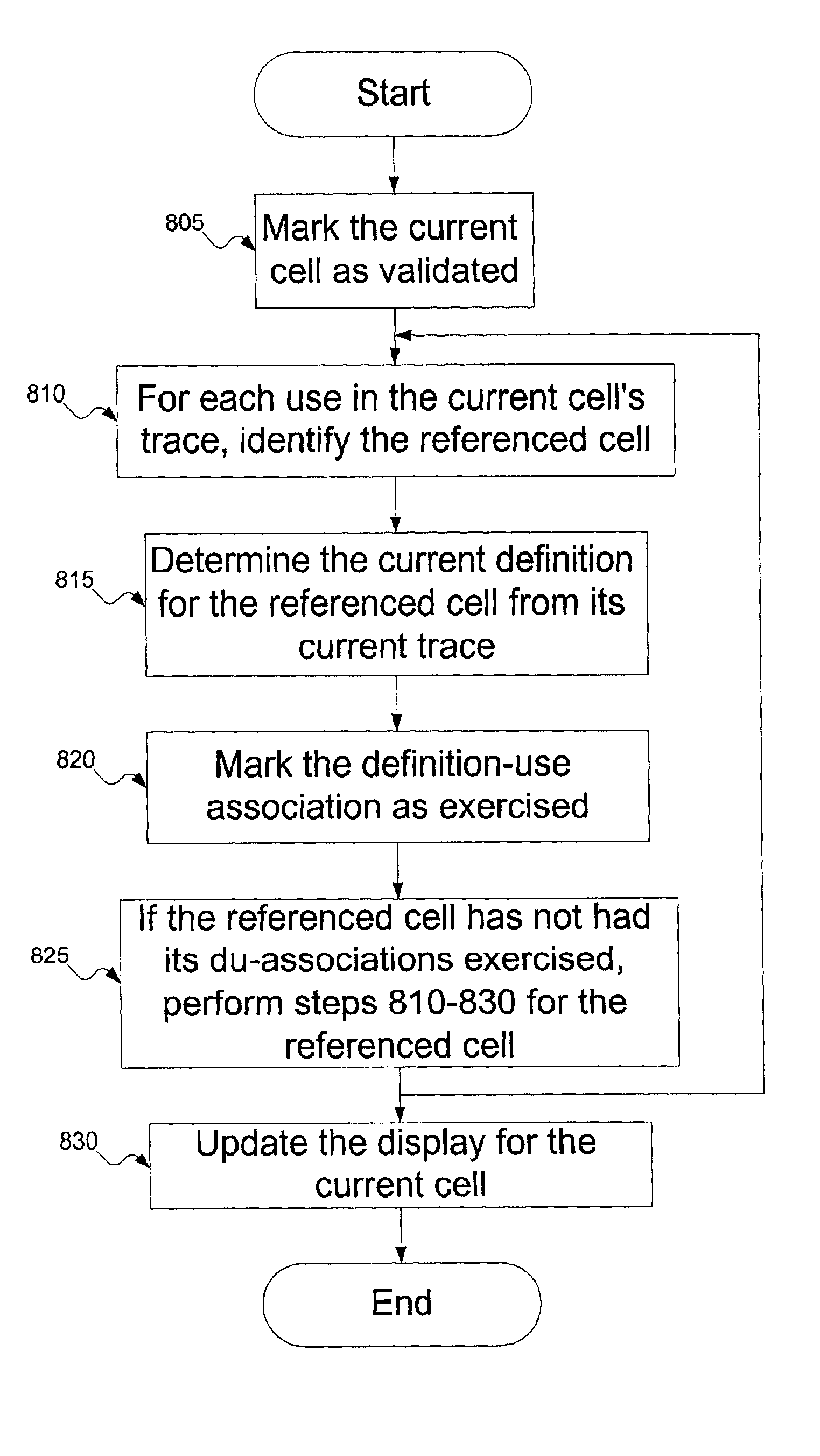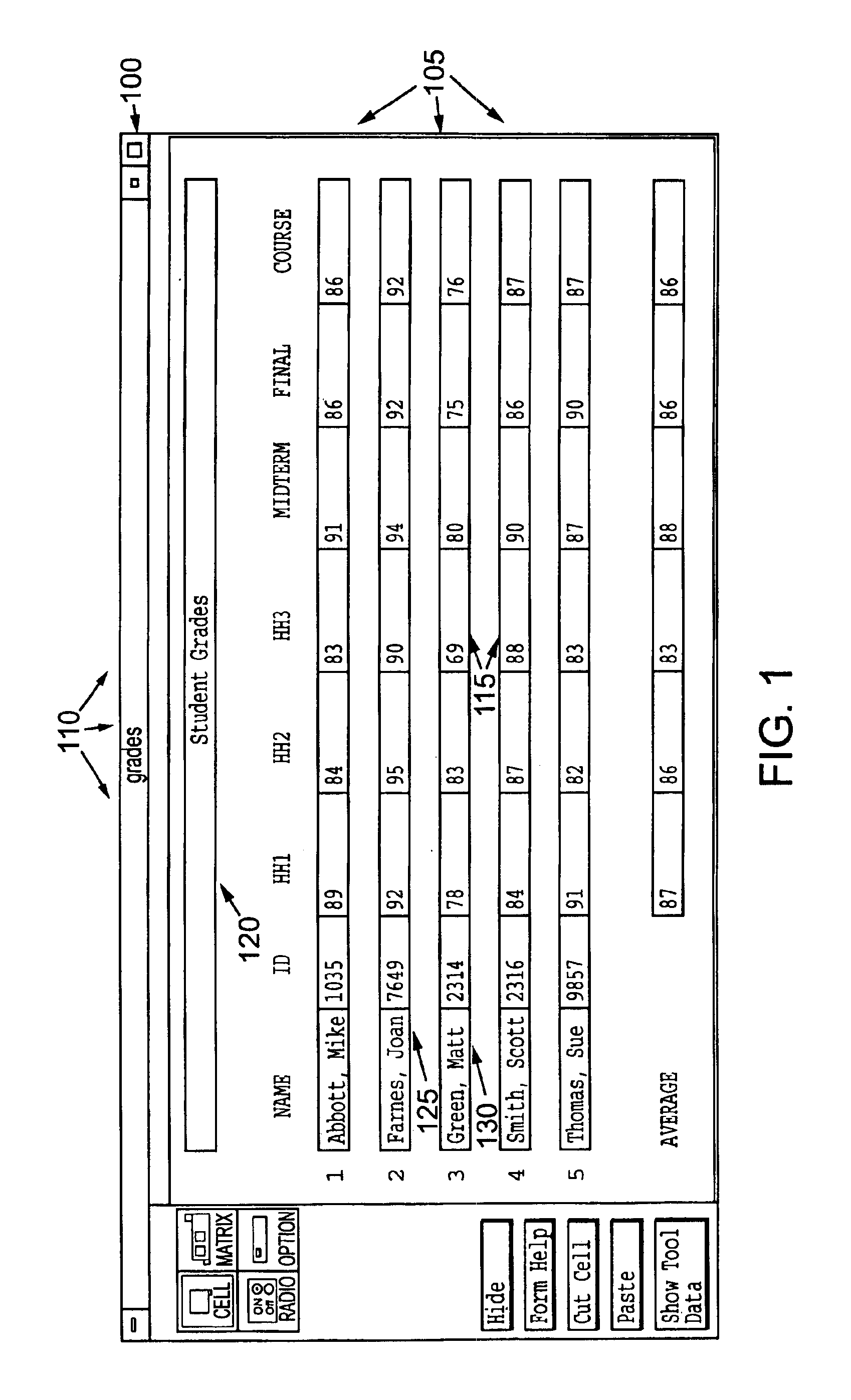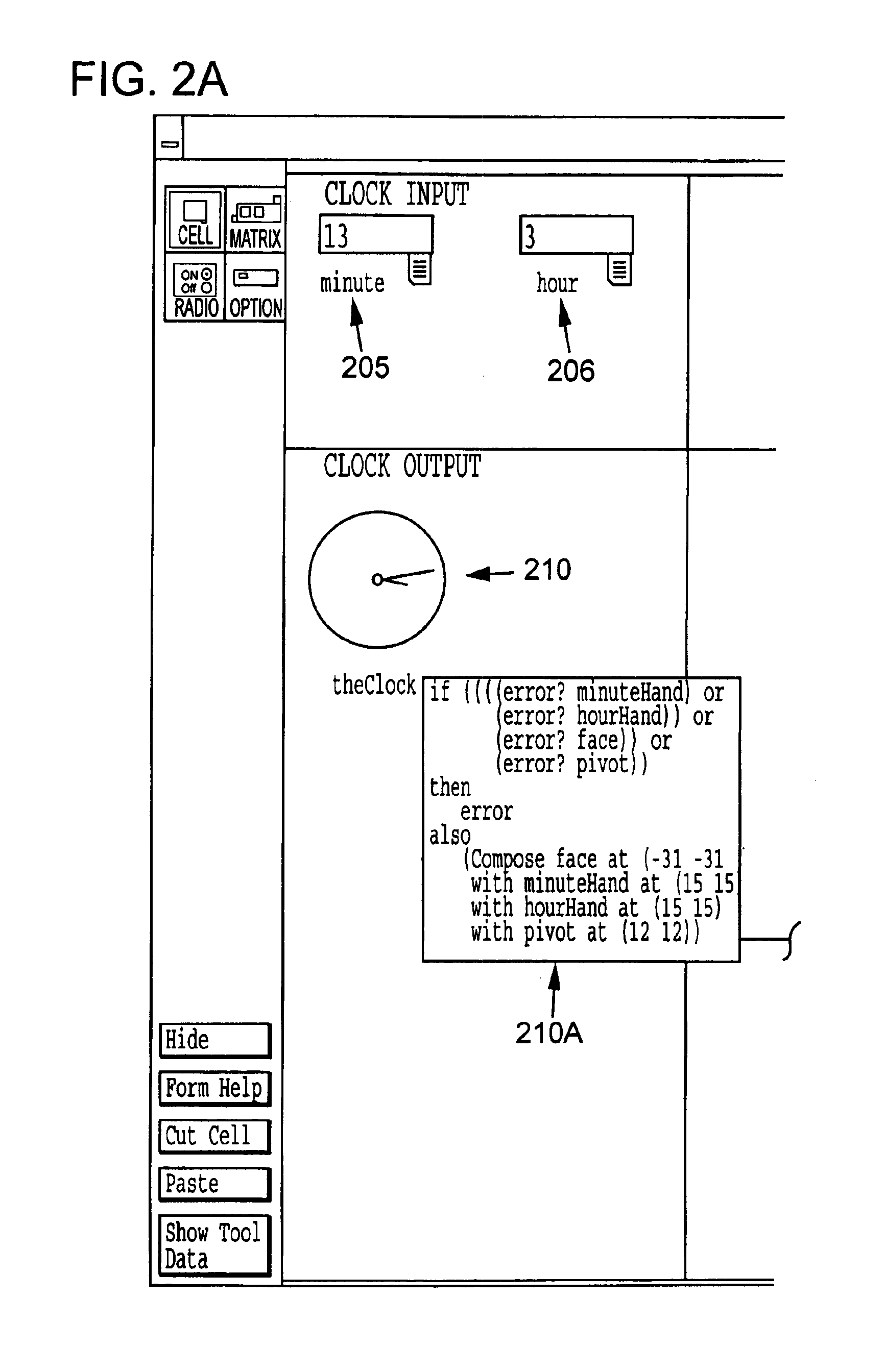Methodology for testing spreadsheets
a spreadsheet and spreadsheet technology, applied in the field of methodology for testing spreadsheets, can solve the problems of spreadsheets often containing faults, spreadsheet and spreadsheet paradigm differences, spreadsheet and imperative programming paradigms are significant differences
- Summary
- Abstract
- Description
- Claims
- Application Information
AI Technical Summary
Benefits of technology
Problems solved by technology
Method used
Image
Examples
Embodiment Construction
[0030]I. Background and Definitions
[0031]A. Spreadsheet Languages
[0032]Users of spreadsheet languages set up spreadsheets and specify their contents in order to program. The contents of a spreadsheet are a collection of cells; each cell's value is defined by that cell's formula; and as soon as the user enters a formula, it is evaluated and the result is displayed. The best-known examples of spreadsheet languages are found in commercial spreadsheet systems, but there are also many research systems (e.g., (Burnett98b, Chi97, Leopold97, Myers91, Smedley96, Viehstaedt92)) based on this paradigm.
[0033]Below are described examples of spreadsheets in the research language Forms / 3 (Burnett98b). FIG. 1 shows a traditional-style spreadsheet used to calculate student grades in Forms / 3. A typical spreadsheet 100 is composed of a number of rows 105 and a number of columns 110. Each cell 115 lies at the intersection of a row and a column. As shown with cell 120, a cell can span multiple columns; ...
PUM
 Login to View More
Login to View More Abstract
Description
Claims
Application Information
 Login to View More
Login to View More - R&D
- Intellectual Property
- Life Sciences
- Materials
- Tech Scout
- Unparalleled Data Quality
- Higher Quality Content
- 60% Fewer Hallucinations
Browse by: Latest US Patents, China's latest patents, Technical Efficacy Thesaurus, Application Domain, Technology Topic, Popular Technical Reports.
© 2025 PatSnap. All rights reserved.Legal|Privacy policy|Modern Slavery Act Transparency Statement|Sitemap|About US| Contact US: help@patsnap.com



